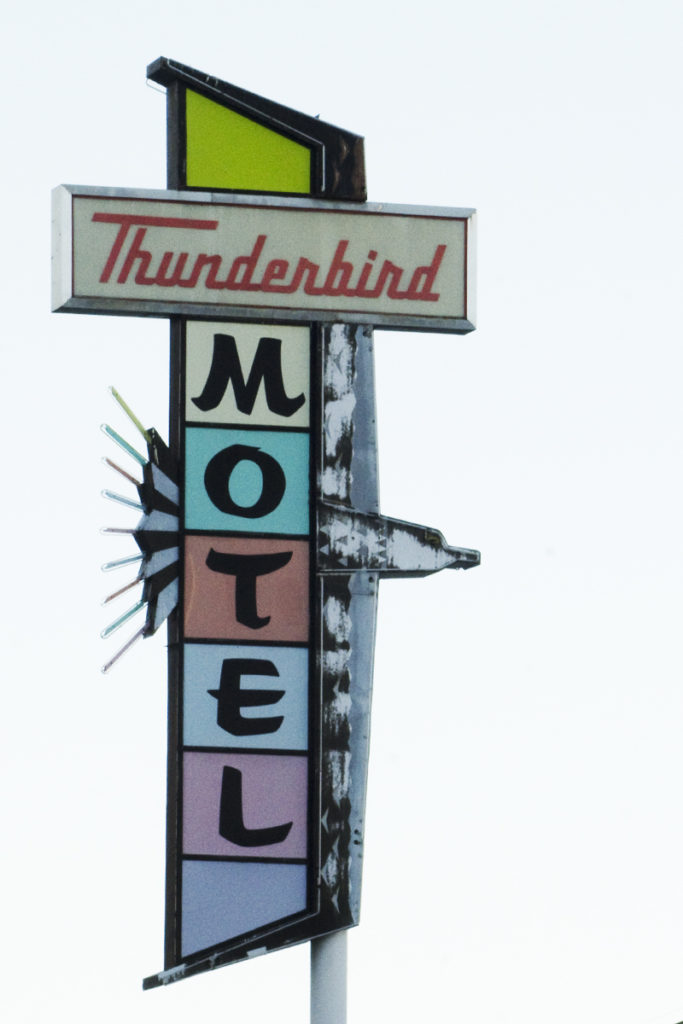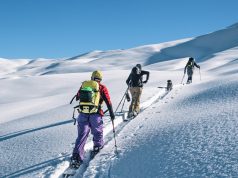
How far can you go on one tank of gas? Two hundred miles? Three hundred? Four? Well, it all depends upon where you’re headed (you’ll get better gas mileage going east from Boulder than heading west uphill into the mountains), what car you have and how much stuff you have on your roof rack. But regardless of how far you think you can go, and what direction you choose, the reality is that you can go far enough to leave a lot of things behind. Things like your nosey neighbor and the dog across the street that won’t stop barking. You can leave behind your work obligations (well, temporarily) and the bills that keep coming into your mailbox (also temporarily). You can ditch the Thursday night crowds on Pearl Street Mall and the screaming kids at the pool. So, while someone once said that the journey matters more than the destination, we’d beg to differ. We think the destination matters the most. Especially when you can get there on one tank of gas.
Because vehicles, driving habits and hills matter, the amount of miles you can drive on a single tank varies. Some can go farther, and some won’t be able to go as far. But who cares? Let’s not quibble over the details of individual cars, driving habits and if you’re light on the pedal or if all those mountain bikes on your roof rack knock off 5 miles per gallon — or is it really 7? — (remember, that kind of niggely stuff is why you want to get the hell out of here) and focus on the big picture: the open road, if you will. According to the internet and Google (which are always right, mostly, some of the time), a gas tank that holds 13 gallons and a car that gets an average of 31 miles per gallon will be able to hit 400 miles on a single tank of gas. That’s 400 miles of freedom. Four hundred miles away from all that stuff that bugs you. Four hundred miles of open road.
Not all of our destinations will leave your tank on empty, but they all are far enough out there that you’ll clock plenty of miles, see strange and interesting new things and have the chance to eat at plenty of dubious roadside restaurants. They’re far enough away that you’ll get your car dusty and dirty, you’ll end up road weary, and you’ll have been gone long enough that you’ll forget some of the things you’ve left behind. Because what is summer without a road trip? To be honest, it isn’t summer at all.

Dinosaur National Monument
5 hours 32 minutes (298.8 miles) via I-70 West
It’s hot here, way out in the desert in the Northwest corner of our state. The sun beats down and the rocks glisten and sand crunches under your feet. This area is true canyon country, with the Green and the Yampa the most notable of the watercourses that have etched the landscape. In the canyons and on the cliffs below the mesas, you’ll find evidence of ancient people, with petroglyphs and pictographs. There’s also the evidence of the prehistoric behemoths that gave this area its name. But perhaps the most compelling part of the monument today is its prime location on the edge of the Colorado plateau which means the monument is a lesson in biological diversity with more than 1,000 native species of plants and animals.
Gateway, Colorado
5 hours 12 minutes (300.2 miles) via I-70 West
There isn’t much in Gateway. Because of this you’d be well advised to stock up on water, beer, jerky and more beer in Grand Junction. But what Gateway has is an interesting mix of the tourist and the remote. The town is home to the Gateway Canyons Resort and Spa as well as the Gateway Auto Museum. But the real attraction is a prime location tucked between the Uncompahgre plateau and Utah’s La Salle Mountains. With the Dolores River on the valley floor, mountains to the west and the plateau to the east, the area is a mix of red rock canyons, dirt roads climbing into aspen glades and primo campsites along the river.
Yampa, Colorado
3 hours 33 min (158.3 mi) via I-70 West
If you hunt (which used to be common around these parts but is less so now that Boulder has, err, changed) you’ve heard of Yampa. This small town on a back road between Vail and Steamboat started as an honest-to-God hunting camp. And while there’s still plenty of the Old West in this part of the state (including people who own guns and use them to kill stuff they then eat), the reason you need to know about Yampa is the Flattops. Yampa is the gateway to the Flat Tops wilderness area, one of Colorado’s gems. With amazing hiking and backpacking and tons of lakes for fishing or swimming, the area is wild yet accessible and is far enough off the beaten track that you won’t see people. Unless, of course, it’s hunting season.

Cuchara, Colorado
3 hours 44 minutes (216.9 miles) via I-25 South
The iconic Spanish Peaks loom over this southern Colorado destination, a pair of 13ers that are well worth a summit attempt. To the west, there are more objectives in the southern end of the Sangre de Cristo range with 10,000- to 14,000-foot summits that see a whole lot less traffic than their Front Range counterparts. There are plenty of camping opportunities in the area, along with a smattering of cabins and other rustic lodges. But best of all is the old school Dog Bar, the perfect end to a day of peak bagging in southern Colorado.
Road Warrior Rules:
Road trips are awesome, except when they’re not. In this regard the biggest issue on any road trip is the health of your ride. Change your oil and check all fluids before your departure. Make sure your spare tire is full of air (and check your regular tires as well for proper inflation and wear), ensure your jack is functional and you know how to use it. Bring extra water and energy bars. Consider joining AAA: their AAA+ membership gets you up to 100 miles of towing at no extra charge, an essential benefit in some of the more remote parts of our state. Finally, leave the attitude at home. A smile and some stoke goes a long way to a warm welcome when you’re on the road in a strange place and need directions, a recommendation for the best breakfast joint, suggestions for car camping or a mechanic to check out that strange grinding noise that just started coming from the depths of your engine.














